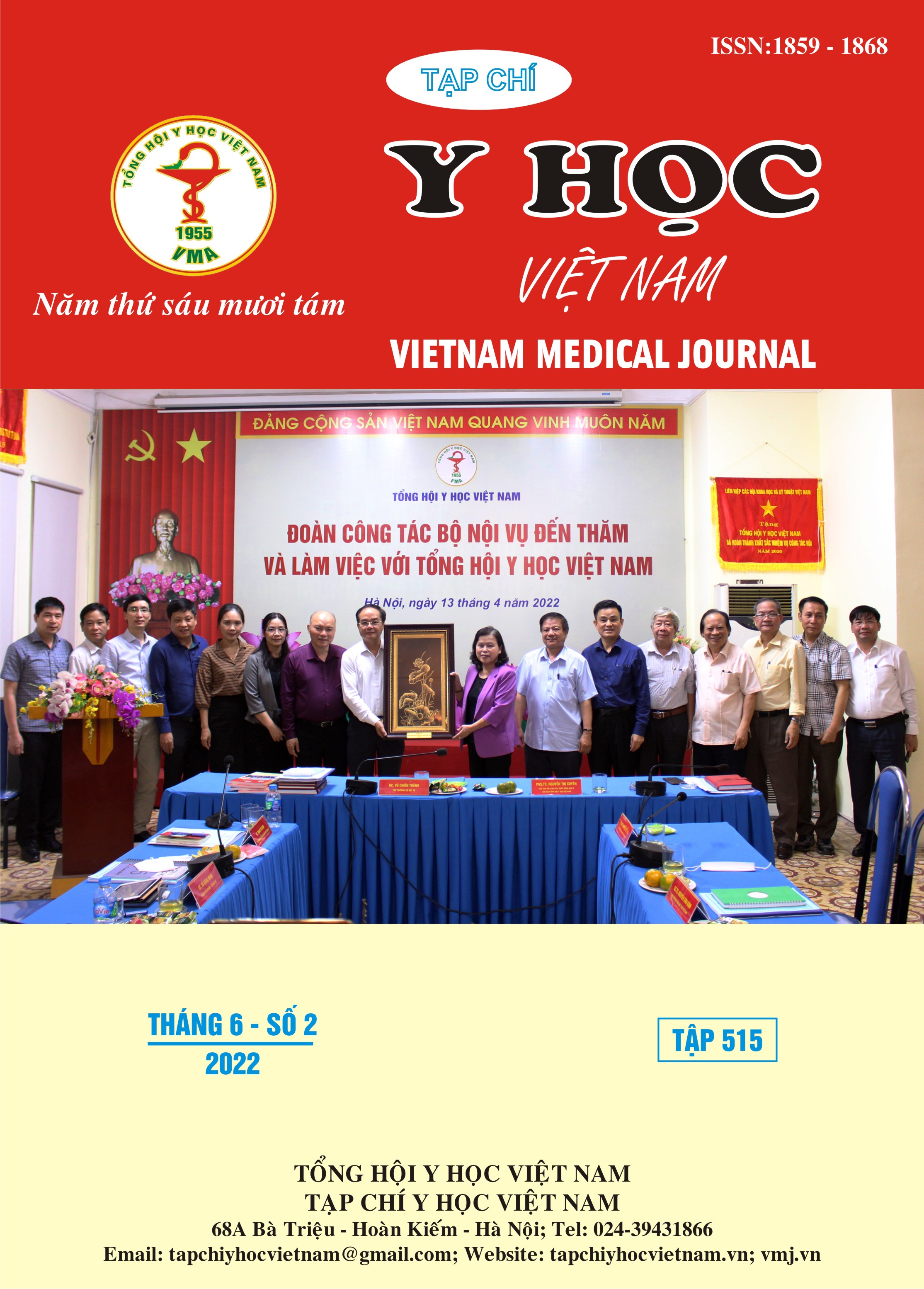ASSESSING THE EFFECTIVE TREATMENT IN PATIENTS WITH CLEFT PALATE AT QUANG NGAI HOSPITAL FOR WOMEN AND CHILDREN
Main Article Content
Abstract
Background: Cleft palate, which separates the palatial structure, is a congenital malformation in the maxillofacial region. The palatal structure includes the palatine bone, the palatine levator muscle mass, the pharyngeal stretcher muscle, and the mucosa. Although the cleft palate is not life-threatening, it makes difficulties in eating and communication. It is necessary to have a comprehensive treatment plan from birth to maturity with a combination of many specialties. Up to now, there is no research on cleft palate treatment in Quang Ngai. Objective: Describe the clinical characteristics and evaluate the surgical results of patients with cleft palate treated at Quang Ngai Hospital for Women and Children. Method: A descriptive, prospective longitudinal study was performed on 32 patients with congenital cleft palate who were treated at Quang Ngai Hospital for Women and Children between January 2021 and August 2021. Result: Clinical characteristics: Among 32 patients, there are 23 males and 9 females with the common age of 12-24 months. The reason for hospitalization is due to lisp, reaching 56.2% (18/32); choking when eating or drinking is 43.8% (14/32). Tooth decay over 2 teeth accounts for 40.6%. Sick mother in the first trimester of pregnancy who gives birth infants with cleft palate reaches 34.4% (11/34). The number of right-sided cleft palate cases reaches a peak of 40.6% (13/32), the figure for the left-sided one is 18.8% (6/32), and the percentage of soft and hard cleft palate is 31.3% (10/32); the proportion of cleft lip and palace is 62.5% (20/32). The mean width of the cleft palate at the posterior nasal spine is 16.1±3.4 mm. The mean length of the soft palate before and after surgery is 20.84±3.44 mm and 29.13±3.24 mm, respectively, and has increased by 39.78%. The average surgical time is 85.47±8.17 minutes. Surgical results: Successful results after surgery reach 96.6% (31/32), one patient gets broken suture of incision. After two months, patients with good incision account for 90.6%, and 9.45% (3/32) of patients have a stoma. Conclusion: Common clinical characteristics include: right-sided cleft palate, left-sided cleft palate, soft and hard cleft palate, cleft lip and palace. Cleft palate surgery at Quang Ngai hospital for Children and Women achieves positive results. The operation time is acceptable. After two months, cases with good incisions account for 90.6%.
Article Details
Keywords
Cleft palate, Maxillofacial malformations, Cleft lip, Cleft palate treatment, Quang Ngai Hospital for Women and Children
References
2. Phumzile H (2019), “Epidemiology and clinical profile of individuals with cleft lip and palate utilising specialised academic treatment centres in South Africa”, PLoS One, pp.5-16.
3. Hadal K, Mustafa S (2018), “The role of intravelar veloplasty in primary cleft palate repair”, Zanco J. Med. Sc, pp.47-69.
4. Chuxian L (2019), “Varying width ratio patterns of posterior hard palate cleft to posterior maxillary tuberosity plane in cleft palate”, Xi Kou Qiang Yi Xue Za Zhi, pp.3-4.
5. Jayarajan R (2018),“Intravelar veloplasty: A review”, Cleft Lip Palate Craniofac Anomal, pp.68-73.
6. Phạm Dương Châu (2012), “Đánh giá kết quả phẫu thuật khe hở vòm miệng hai bên bẩm sinh theo phương pháp đẩy lùi vòm miệng(Push back) tại Bệnh viện Răng Hàm Mặt Trung Ương”, Tạp chí Y học thực hành, tr.830.
7. Phan Quốc Dũng, Hoàng Tử Hùng (2007), “Tình hình dị tật khe hở môi và hàm ếch bẩm sinh tại bệnh viện Từ Dũ và Hùng Vương”, Tuyển tập công trình nghiên cứu Y học răng hàm mặt, tr.93-100.
8. Trương Mạnh Dũng, Nguyễn Thanh Hòa (2007), “Nghiên cứu các hình thái lâm sàng dị tật khe hở môi – vòm miệng ở trẻ sơ sinh tại thành phố Cần Thơ 2001 -2005”, Tạp chí Y học thực hành, tr.589- 590.
9. Nguyễn Văn Đẩu (2020), “Phẫu thuật khe hở vòm khẩu cái theo phương pháp Push- Back”, Phác đồ điều trị Nhi khoa 2 Bệnh viện Nhi Đồng 1, Nhà xuất bản Y học, tr.501- 509.
10. Phạm Thanh Hải (2012), “Nghiên cứu đặc điểm dị tật bẩm sinh khe hở môi – vòm miệng và thể lực của trẻ em tại bệnh viện Đại Học Y Hải Phòng”, Tạp chí Y học thực hành, tr.807.


